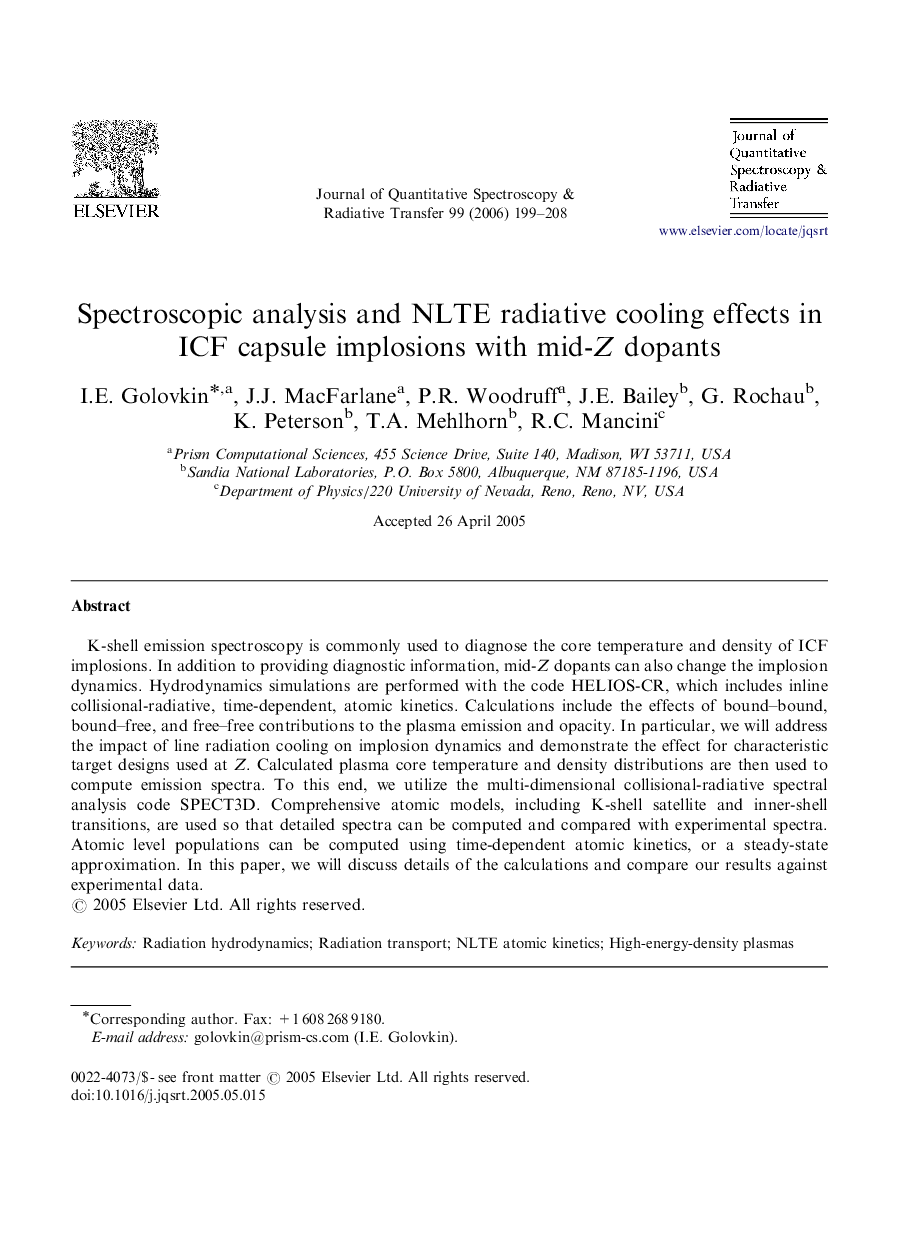| Article ID | Journal | Published Year | Pages | File Type |
|---|---|---|---|---|
| 5431094 | Journal of Quantitative Spectroscopy and Radiative Transfer | 2006 | 10 Pages |
K-shell emission spectroscopy is commonly used to diagnose the core temperature and density of ICF implosions. In addition to providing diagnostic information, mid-Z dopants can also change the implosion dynamics. Hydrodynamics simulations are performed with the code HELIOS-CR, which includes inline collisional-radiative, time-dependent, atomic kinetics. Calculations include the effects of bound-bound, bound-free, and free-free contributions to the plasma emission and opacity. In particular, we will address the impact of line radiation cooling on implosion dynamics and demonstrate the effect for characteristic target designs used at Z. Calculated plasma core temperature and density distributions are then used to compute emission spectra. To this end, we utilize the multi-dimensional collisional-radiative spectral analysis code SPECT3D. Comprehensive atomic models, including K-shell satellite and inner-shell transitions, are used so that detailed spectra can be computed and compared with experimental spectra. Atomic level populations can be computed using time-dependent atomic kinetics, or a steady-state approximation. In this paper, we will discuss details of the calculations and compare our results against experimental data.
